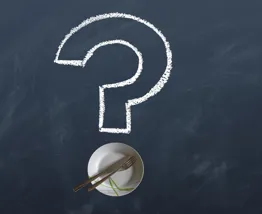Enrol in an online course today for flexible, self-paced learning—no fixed schedule required. Plus, enjoy lifetime access to course materials for convenient revisiting.
Constellation Therapy 2/8: Entanglement and Disentanglement

One of the hardest elements of the constellation to comprehend internally or to explain to others is the process and experience of representation within a constellation. This is where a representor, in stepping into a position within the constellation map, experiences and articulates the emotional dynamics of entanglements that are not their own and exist outside of them.
There have been various attempts to explain and explore this phenomenological effect, the most popular being an explanation based on Rupert Sheldrake’s concept of ‘morphic fields’, or Bert Hellinger’s ‘knowing field’.
Each aspect of our society has a field of influence and we seek to belong in each aspect through the agreements we discussed in our first blog. The belonging is based upon the balance of agreements within each part and is most often seen through a lens of shared beliefs within that part of the system. The belonging for an individual flows through:
• Collective global influences
• Culture within a country
• Community
• Friendship and relationships
• Family of origin
• The individual
When our beliefs – the passport to our belonging through the agreements – are not accepted and balanced internally within ourselves, then the field of influence will become disrupted. For example, this might happen if you have been brought up Catholic and then choose to become Buddhist, or if your family does not believe in divorce and you choose, reluctantly or otherwise, to become divorced. We can belong in one part of the structure and experience displacement in others.
A quantum perspective
I have a natural curiosity and I enjoy trying to figure out the ‘why’ of things. I think it is the many years of immersion in the world of physics. I worked for several years as a clinical physicist within the NHS specialising in Neurophysiology and my masters degree was focused on understanding the effect of energy healing on the autonomic nervous system.
I like to think about people as walking wave functions. That may sound a little odd but let me explain. In terms of quantum physics, a wave function represents the potential for all outcomes. Think about a human going about their every day as a walking wave function with the potential for all outcomes – emotionally, spiritually, physically wandering around with the potential for anything to happen.
The thing about wave functions is that they eventually collapse into an actuality, a reality, when they interact with something or someone. And there are many happenings which can provoke a wave function collapse, like listening to the radio and a song coming on unexpectedly that lifts you up through space and time, depositing you in the visceral experience of your memories. It can be joyful or it can be a sucker punch, either way it is often a highly emotional moment. That is a wave function collapse.
We go through our day, our lives, as a walking wave function, with infinite potential running through us, and then we interact with a trauma point and collapse into the actuality of an entanglement. In the collapse into the entanglement we are no longer just us, we are ourselves plus our ancestors and lost souls.
Unburdening the client by representing the unseen
Giving place to a previously unseen aspect within a constellation removes the burden from the system. It provokes a wave function collapse into a disentangled actuality within the safe container of a constellation. This is what happens when we place a representative space within a constellation map. What was previously absent, and either being held by the client or displacing them, has its own place outside of the client. The unseen becomes seen. For the individual in question this can be transformational: they are no longer carrying the burden of the entanglement, as it now exists outside of them.
Ailsa, who was in her 20s at the time, had come for a session because she was struggling with moving forward with her life, she felt stuck and encumbered. When we set up the map to explore her family dynamics it was clear that she was drawn to look beyond her mother and grandmother to their lost dreams and grief. When we placed a mat down in the constellation to represent a lost child of her grandmother, Alisa broke down with relief at seeing what was actually there: “I thought all of this was mine”.
Seeing the entanglement, feeling the weight of what has been held tightly or lost, is the first step towards disentangling it.
In the next blog we will be focusing on the use of language within constellation to further support the disentangling of our invisible inheritance.

















